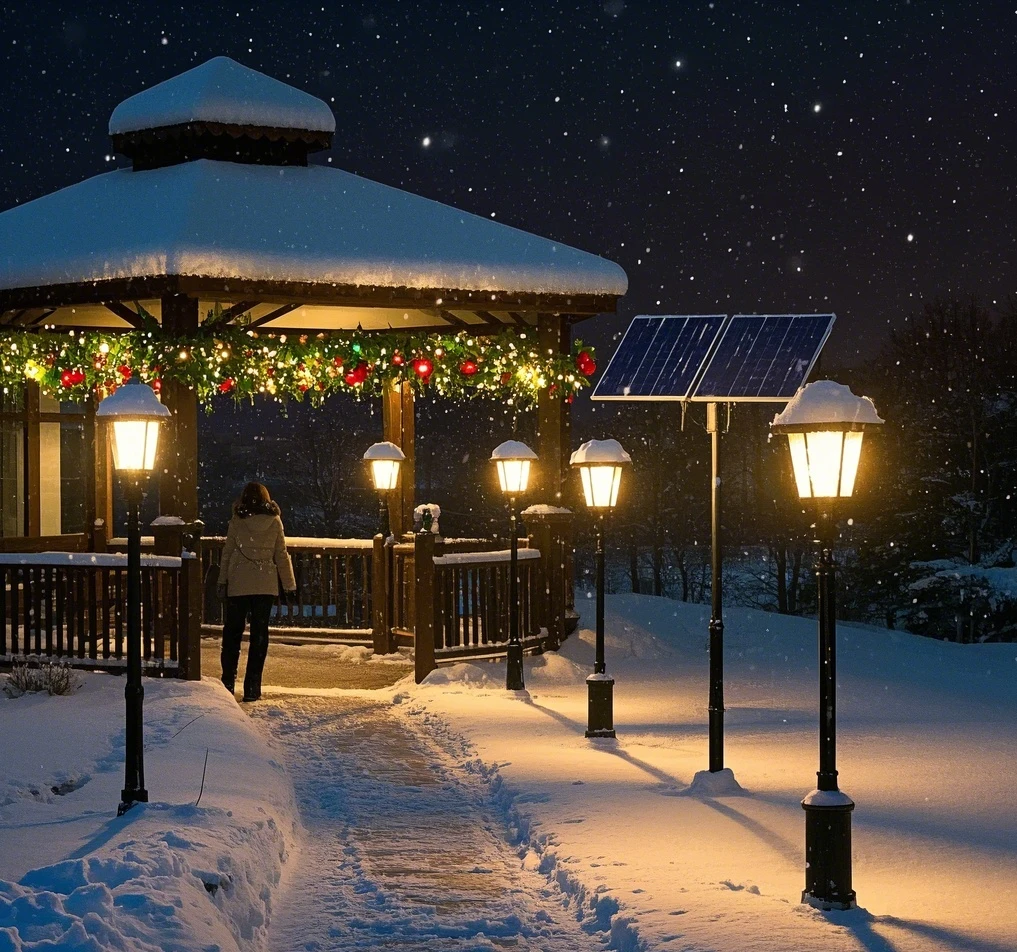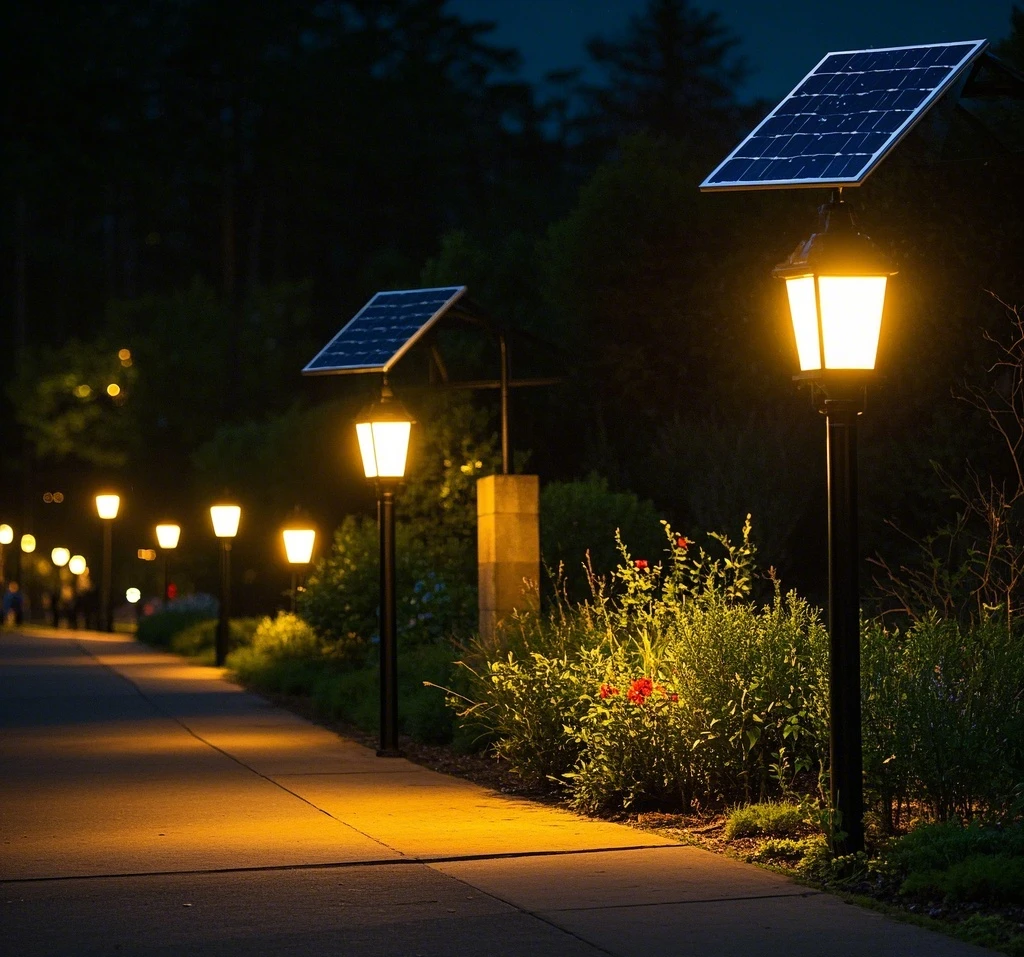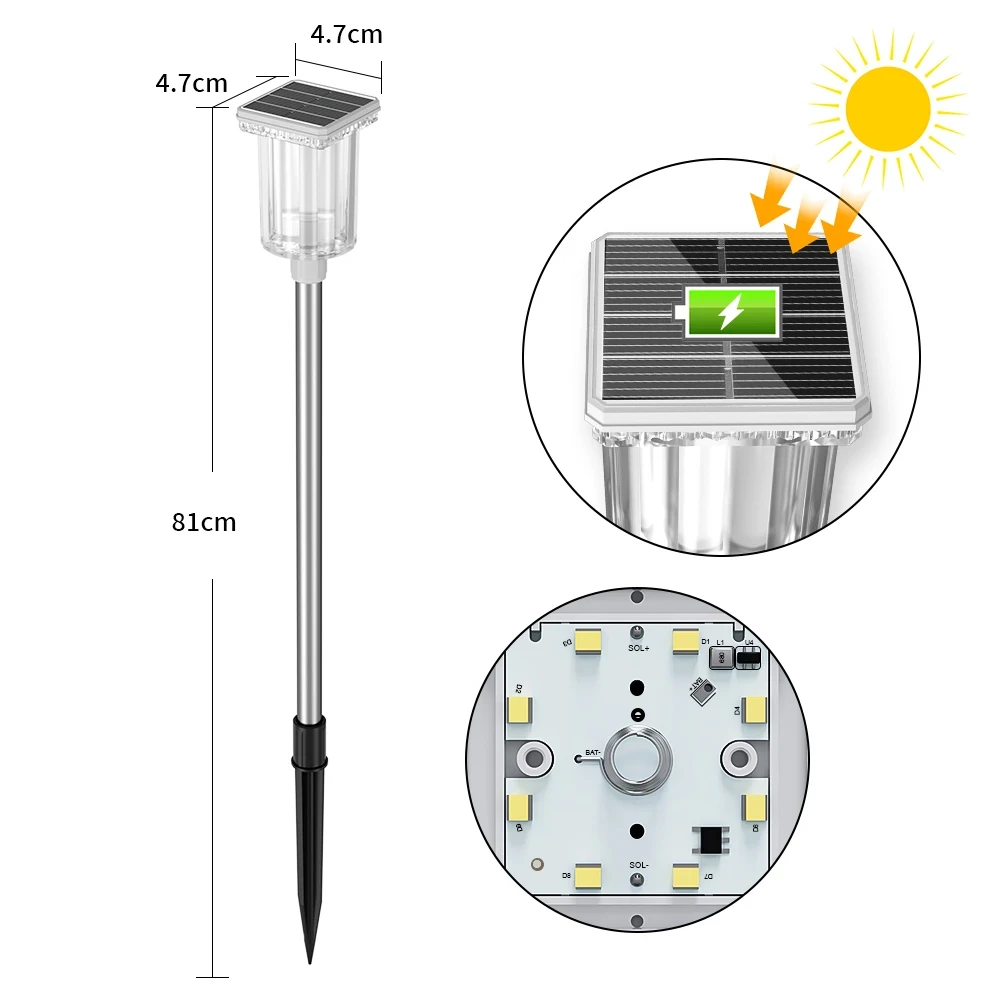Brightness defines the effectiveness of solar lights for outdoor use. Walkways, gardens, and security areas demand sufficient illumination. Picking the brightest solar lights involves evaluating lumens, solar panel efficiency, battery capacity, and LED quality. This article outlines the key factors for selecting high-brightness solar lights, supported by U.S. authoritative reports and technical analysis.

Understanding Brightness in Solar Lights
Brightness in solar lights stems from lumens, the measure of visible light output. Higher lumens indicate greater intensity. Solar lights rely on photovoltaic panels to capture sunlight, batteries to store energy, and LEDs to emit light. The interplay of these components determines maximum brightness. Ambient conditions, such as cloud cover or shade, influence performance.
The U.S. Department of Energy (DOE) highlights LEDs as the standard for solar lighting. LEDs produce 100 to 200 lumens per watt, far surpassing incandescent bulbs. Efficiency drives brightness in limited-energy systems. Users seeking the brightest options must prioritize components optimized for light output.
Key Factors for Maximum Brightness
Several elements dictate the brightness of solar lights. Lumens, panel wattage, battery capacity, and LED efficacy form the foundation.
Lumens Output
Lumens directly reflect brightness. Solar pathway lights range from 10 to 100 lumens per fixture. The Illuminating Engineering Society (IES) recommends 1 to 2 foot-candles for walkways, translating to 20 to 40 lumens per light. Security or floodlights require 100 to 700 lumens. Consumer Reports’ 2020 solar light review notes that 50+ lumens per unit marks the threshold for “bright” performance. Labels listing lumens guide selection.
Solar Panel Efficiency
Solar panels power brightness. Monocrystalline panels achieve 15% to 22% efficiency, per National Renewable Energy Laboratory (NREL) data. Polycrystalline panels lag at 13% to 16%. Higher efficiency generates more energy from sunlight. A 5-watt monocrystalline panel produces enough power for 50 to 100 lumens nightly. Undersized panels limit output, dimming lights in low-sun conditions.
Battery Capacity
Batteries store energy for illumination. Capacity, measured in milliampere-hours (mAh), determines runtime and brightness. A 2000 mAh lithium-ion battery sustains a 50-lumen LED for 8 hours. NiMH batteries, common in budget models, offer 600 to 1200 mAh, supporting 20 to 30 lumens. DOE’s solid-state lighting research shows that larger capacities enable brighter, longer-lasting light. Checking battery specs ensures adequate power.
LED Quality
LED efficacy impacts brightness. High-quality LEDs deliver 150 to 200 lumens per watt, per Energy Star standards. Low-grade LEDs drop to 80 lumens per watt, wasting energy. The DOE’s “Lighting Facts” program verifies efficacy on certified products. Brightest solar lights pair efficient LEDs with strong panels and batteries. Lifespan also matters, as LEDs dim after 25,000 to 50,000 hours.

Design Features Enhancing Brightness
Physical attributes amplify light output. Lens design, reflector use, and panel placement affect performance.
Lens and Reflector Design
Lenses focus light for greater intensity. Clear, narrow-beam lenses concentrate lumens, boosting brightness over small areas. Diffused lenses spread light, reducing perceived intensity. Reflectors inside fixtures enhance output by directing light downward. IES guidelines note that focused beams achieve higher foot-candles. Products with adjustable lenses offer versatility.
Solar Panel Size and Orientation
Larger panels capture more sunlight. A 10-watt panel powers 100 to 200 lumens, ideal for bright floodlights. Orientation matters. NREL advises tilting panels southward at 30 degrees in the U.S. for maximum exposure. Adjustable mounts optimize charging. Fixed, undersized panels restrict energy, capping brightness.
Environmental Considerations
Location and climate shape brightness potential. Sunlight availability and seasonal changes require attention.
Sunlight Availability
Daily solar insolation varies by region. NREL maps show southern U.S. states averaging 5 to 6 kWh/m²/day, supporting high-lumen lights. Northern areas drop to 3 to 4 kWh/m²/day, challenging brightness in winter. Shaded yards reduce charging. Brightest lights need 6 to 8 hours of direct sun.
Weather Resilience
Weather affects performance. Overcast days cut energy intake by 50%, per DOE estimates. Waterproof ratings (IP65 or higher) protect components, ensuring consistent output. Cold temperatures reduce battery efficiency by 20% below 32°F, dimming lights. Heat-tolerant designs maintain brightness above 90°F.
Evaluating Product Specifications
Labels and certifications reveal brightness potential. Energy Star, DOE data, and manufacturer claims provide clarity.
Reading Product Labels
Lumens, wattage, and battery capacity appear on packaging. A 5-watt panel with a 3000 mAh battery and 100-lumen LED signals bright output. Vague terms like “super bright” lack precision. Consumer Reports advises cross-checking specs against real-world tests. Overstated claims mislead buyers.
Certifications and Standards
Energy Star certification ensures efficiency and brightness. Certified solar lights deliver 20 to 100 lumens with reliable performance, per DOE benchmarks. IES standards validate illuminance for specific uses. Third-party testing, like UL or ETL listings, confirms durability and output.
Insights from U.S. Authoritative Reports
The DOE’s “Energy Star” program rates solar lights for efficiency. Certified models achieve 50 to 200 lumens with optimized components. Data emphasizes panel and battery synergy for brightness.
NREL’s solar technology research details panel efficiency. Monocrystalline designs maximize energy, supporting brighter LEDs. Studies show a 20% output boost over polycrystalline alternatives.
Consumer Reports’ 2020 solar light analysis tested brightness. Top performers hit 70 to 150 lumens with 5 to 10-watt panels. Budget models underperformed, averaging 20 lumens despite bold claims.
The IES provides illuminance benchmarks. Recommendations of 2 foot-candles for security align with 100+ lumen lights. Pathway needs stay below 50 lumens, guiding bright selection.
Practical Steps for Selection
Test lights in-store if possible. Compare brightness side-by-side. Online reviews reveal real-world brightness. Match specs to needs: 20–50 lumens for paths, 100+ for security. Prioritize quality brands with Energy Star or IES backing.
Regional Brightness Needs
Southern U.S. climates favor high-lumen lights. Northern winters demand efficient panels. Coastal areas need corrosion-resistant builds. Urban settings reduce brightness needs due to ambient light.
Picking the Brightest Solar Lights
Brightest solar lights combine high lumens, efficient panels, strong batteries, and quality LEDs. Specs like 50–200 lumens, 5–10-watt panels, and 2000+ mAh batteries ensure top performance. Design and placement enhance output. DOE, NREL, and Consumer Reports data confirm these factors drive brightness. Matching needs to specs delivers optimal illumination.


Leave a Reply